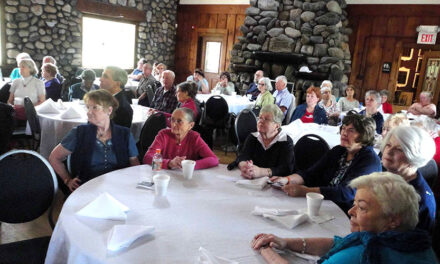Published in the June 3, 2016 edition
Here is a message from Health Director Ruth Clay, MPH.
MELROSE — Spring has arrived, and along with the good weather we are seeing an increase in a variety of wildlife sightings. Specifically, a number of residents have noted seeing rats in different neighborhoods. We understand how distressing this can be and are actively working with residents to deal with the issue head on. Rodent control is under my authority, and in my 20 years here in Melrose I have dealt with several cases. My staff and I take this issue very seriously and we have considerable experience in dealing with this issue over the years.
Here are some measures that the Health Department has implemented:
Call the Health Department if you see rodents on your property or public property (781-979-4130 or health@cityofmelrose.org). A Health Inspector will come out personally and walk the property with you, looking for burrows and anything that may be attractive to rats and will help you solve the problem.
The Health Department is mapping the locations of sightings to identify any common areas and to implement a plan to eradicate them.
The Health Department has contracted a licensed Pest Control Operator to perform targeted application of pesticides in storm drains. The contractor we use is trained to work in residential areas and in fact is the contractor many residents are using for their own property.
We have asked the MBTA to bait the areas along the railroad tracks.
The Department of Public Works has increased its regular schedule of emptying trash barrels in parks. You can report an overflowing trash can on City property by calling the City Yard at 781-665-0142.
Some have expressed concerns that the problem is being caused by construction. This can be true. There is private home construction and other construction going on right now in Melrose as well as Saugus and surrounding communities, which is common every spring. However, the City has policies to limit this. The City of Melrose requires that rodent control be done within 30 days of any building demolition in order to prevent that from occurring. Rodents are usually not disturbed by routine roadwork and sidewalk work but by extensive demolition or excavation. Furthermore, they usually stay close to home and typically go just far enough to find food and shelter.
What should I know about rodents?
Norway rats live throughout the City and beyond.
They eat everything we eat — and more!
They can gnaw through plastic, wood, soft metals, wire (causing house fires), even cinderblock and bricks.
They can squeeze through spaces the size of a dime.
They are extraordinary climbers, jumpers and swimmers.
How do I know if there are rodents on my property?
Even if you haven’t seen a rat, you may be able to see the signs they leave behind: burrows, droppings, gnaw marks and rub marks, tracks, trails, nests and hidden food stashes.
How do I eliminate them?
Limit their food and water
Use rodent-proof containers with tight-fitting lids for garbage and store all trash in these containers up to your trash pickup day.
Do not put your trash cans or recycling bins out before 5 p.m. on the day before your trash pickup day.
Replace missing lids and containers that have holes.
Wash garbage cans, recycling bins and the areas around them regularly.
Use rodent-proof containers to store food and pet food — even indoors.
Keep an eye out for rats in your garden — they love fresh fruits and vegetables just as much as we do!
Avoid large compost bins.
Deprive rats of water by repairing leaks in pipes and hoses.
Limit their access and shelter
Indoors:
Plug holes in floors and walls with wire mesh (copper, stainless steel or aluminum). Cover the mesh with spackle, plaster or hardening sealant.
Block the space between doors and the floor with kick plates.
Keep stairwells, airshafts, basements and storage areas clean and clutter-free. Don’t give them anywhere to hide!
Discard newspapers, old insulation and cardboard boxes.
Outdoors:
Repair broken windows and doors; fix holes in screens and roofs.
Cut down grass and weeds that are 12 inches or taller and trim overgrown shrubbery.
Eliminate them
The best way is to hire a licensed pest management professional (ask to see his or her Massachusetts State license). If you do it yourself:
Read the label first on snap traps and glue traps and follow directions carefully.
Place traps no more than 20 feet apart in areas where you have seen signs of rats — gnaw marks, droppings, etc.
Never put traps or poison where children or pets can reach them.
When emptying or throwing away a trap, pick it up with a broom and dustpan — not your hands.
ALL THREE MEASURES ARE USUALLY NECESSARY TO BE SUCCESSFUL!
Although we are concerned about the current rodent problem and we are taking aggressive measures, this is not an uncommon phenomenon. It happens from time to time, especially at this time of year and my staff and I know how to deal with it. We have put together a plan and we have the experience, the resources and the manpower we need to implement it. Please feel free to call the Health Department at 781-979-4130 with any concerns or questions. We are available to help you.




